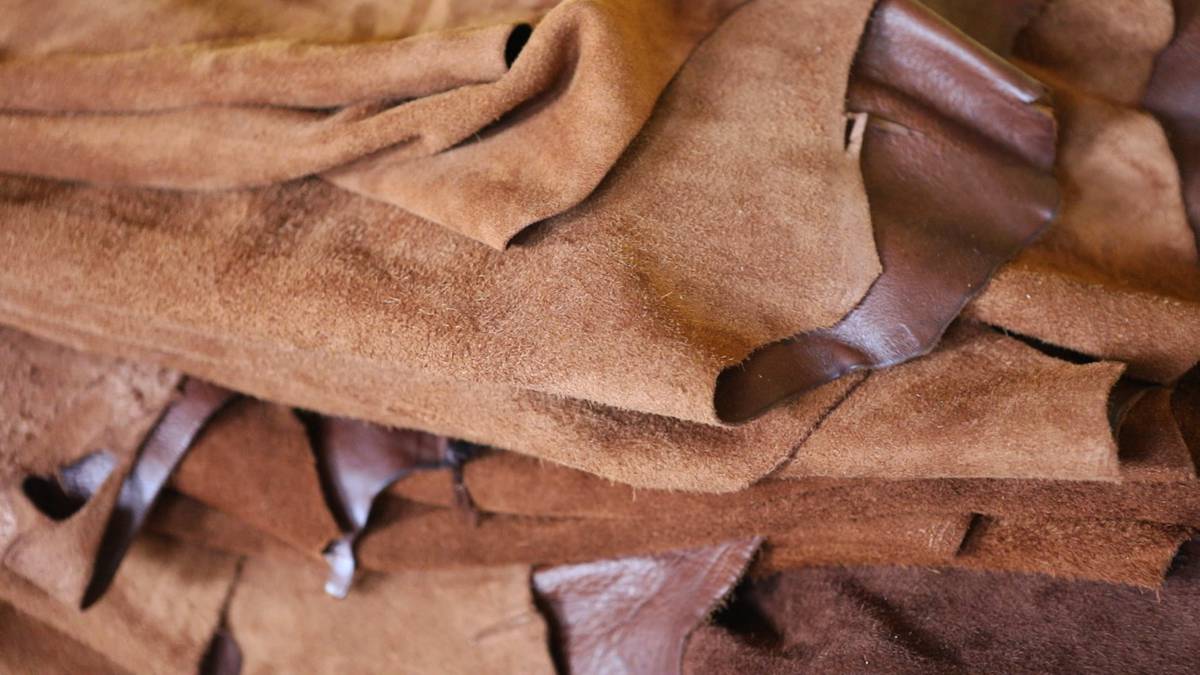Explore the Traditional Methods of Leather Tanning in Nigeria with Wigmore Trading
Explore the Traditional Methods of Leather Tanning in Nigeria with Wigmore Trading
Step into the rich history and time-honored traditions of leather tanning in Nigeria with Wigmore Trading! Join us on a journey to discover the traditional methods that have been passed down through generations, creating some of the most exquisite leather products in the world. Get ready to be immersed in a world where craftsmanship meets culture, as we explore the artistry behind Nigerian leather tanning.
Introduction to Leather Tanning in Nigeria
Leather tanning has been a traditional craft in Nigeria for centuries, passed down from generation to generation. It is a process of converting animal hides and skins into durable leather products that are used for various purposes, from clothing and accessories to furniture and upholstery.
The ancient method of tanning leather in Nigeria involves the use of natural materials such as bark, roots, leaves, and fruits. These materials are boiled together in large pots to create a solution known as “tannin”. The hides or skins are then soaked in this solution for several days until they become soft and pliable. This method is still practiced by many local artisans today, particularly in rural areas where traditional methods are favored over modern techniques.
One of the most well-known types of traditional leather tanning in Nigeria is the Fulani method. This technique originated from the Fulani people who are nomadic cattle herders. They would use cow urine mixed with water as their tanning solution, which gives the leather a distinct color and smell. The hides would be stretched over wooden frames and left to dry under the hot African sun before being smoked over an open fire to make them waterproof.
Another popular method is known as “wet-blue” tanning, which involves using chromium salts to tan the leather quickly. This method was introduced by European settlers during colonial times but has since become widely adopted by local tanners due to its efficiency and effectiveness.
In recent years, there has also been a rise in modern industrial leather tanning facilities across major cities in Nigeria. These facilities use advanced machinery and chemicals to speed up the process and produce high-quality leather products on a larger scale. However, some argue that these methods lack authenticity compared to traditional techniques.
Despite the emergence of modern practices, traditional leather tanning remains an important part of Nigerian culture and economy. Many skilled craftsmen continue to uphold these age-old techniques, producing unique handcrafted leather goods that showcase the country’s rich cultural heritage.
Furthermore, leather tanning has also provided employment opportunities for many Nigerians, especially in rural communities where it is a primary source of income. The industry also contributes significantly to the country’s economy through exports and local sales.
Traditional leather tanning in Nigeria is not just a craft but an integral part of the country’s history and culture. It is a testament to the ingenuity and resourcefulness of its people, who have mastered the art of turning animal hides into beautiful and durable leather products using natural materials and age-old techniques. In the next section, we will explore some of these techniques in more detail.
History and Traditional Methods of Tanning in Nigeria
Nigeria has a rich history and cultural heritage when it comes to leather tanning. For centuries, the traditional methods of tanning have been passed down through generations, with each community having its unique techniques and practices. These methods not only produce high-quality leather but also hold great significance in the country’s cultural identity.
In ancient times, the Fulani tribe in northern Nigeria was known for their expertise in leather tanning. They used natural materials such as tree bark, roots, and leaves to tan hides and skins. The process involved soaking the hides in a mixture of water and crushed bark for several days before stretching them on wooden frames to dry under the sun. This method is still practiced by some rural communities today.
Another traditional method of tanning in Nigeria is using animal urine. This technique is believed to have originated from Hausa craftsmen who would collect animal urine and mix it with ash and other natural substances to create a powerful alkaline solution. The hides were then soaked in this solution for several days until they became soft and supple.
The Yoruba people of southwestern Nigeria also have their unique way of tanning leather known as “Adire Alago.” It involves scraping off the hair from animal skins using sharp knives before treating them with local vegetable dyes made from plant extracts. This method produces vibrant colored leathers that are often used for traditional clothing and accessories.
One interesting aspect of traditional tanning methods in Nigeria is that almost every part of an animal was utilized during the process. For instance, after skinning an animal, bones were boiled down to make glue while fat was rendered into oils used for conditioning leather.
However, with modernization came new technologies that revolutionized the leather industry worldwide, including Nigeria. Today, many industrial tanneries use chrome-tanned or synthetic-tanned processes due to their efficiency and cost-effectiveness. However, there has been a resurgence in recent years towards reviving and preserving the traditional methods of tanning in Nigeria.
At Wigmore Trading, we are proud to continue the legacy of traditional leather tanning in Nigeria by working closely with local craftsmen and artisans who have mastered these techniques. We believe that these methods not only produce high-quality leather but also play a vital role in sustaining the country’s cultural heritage.
The traditional methods of tanning in Nigeria have stood the test of time and continue to be an essential aspect of the country’s history and cultural identity. By exploring and supporting these practices, we can help preserve this rich heritage for future generations to come.
Wigmore Trading: A Leader in the Leather Industry
Wigmore Trading has been a prominent figure in the Nigerian leather industry for over two decades, being recognized as a leader in the field of leather tanning. The company’s success can be attributed to their unwavering commitment to quality, traditional methods and ethical practices.
At Wigmore Trading, they understand that the key to producing high-quality leather lies in the tanning process. Tanning is the critical step that transforms raw animal hides into durable, pliable, and versatile material. It also gives leather its desirable properties such as strength, flexibility, and resistance to water and wear. With this understanding in mind, Wigmore Trading has perfected their techniques to produce top-notch leather products that are highly sought after both locally and internationally.
One of the ways Wigmore Trading stands out from its competitors is by using traditional methods of tanning. These tried-and-tested techniques have been handed down through generations and have stood the test of time. Unlike modern industrial processes that use harsh chemicals and machinery, traditional tanning relies on natural materials such as tree bark extracts and vegetable oils. This method not only produces high-quality leather but also minimizes negative environmental impacts.
In addition to utilizing traditional methods, Wigmore Trading takes great care in sourcing their raw materials ethically. They work closely with local farmers and herders who provide them with high-quality hides from healthy animals raised in natural environments. This ensures that their products are free from harmful chemicals or unethical practices commonly associated with mass-produced leather goods.
Moreover, Wigmore Trading takes pride in supporting local communities by providing employment opportunities for skilled artisans who possess extensive knowledge of traditional tanning techniques. These craftsmen carefully handcraft each piece of leather using age-old methods passed down from generation to generation. This level of attention to detail results in unique and luxurious leather products that cannot be replicated by industrial processes.
It is evident that Wigmore Trading’s commitment to excellence sets them apart as a leader in the Nigerian leather industry. Their use of traditional tanning methods, ethically sourced materials, and skilled craftsmanship have earned them a reputation for producing top-quality leather products that are highly sought after both locally and globally. With Wigmore Trading, you can be assured of receiving only the best when it comes to traditional methods of leather tanning in Nigeria.
The Process of Tanning and Dressing Leather in Nigeria
Tanning and dressing leather is an ancient practice that has been passed down through generations in Nigeria. It involves the use of natural materials and traditional techniques to transform raw animal hides into durable, high-quality leather. In this section, we will explore the step-by-step process of tanning and dressing leather in Nigeria.
Step 1: Procuring Raw Hides
The first step in the tanning and dressing process is procuring raw animal hides. These can come from a variety of sources such as cows, goats, sheep, or even camels. In Nigeria, most of the hides used for tanning come from locally raised animals that are slaughtered for their meat. These hides are then cleaned and preserved by salting until they are ready to be processed.
Step 2: Soaking
Once the raw hides have been procured, they need to be soaked in water to remove any dirt or debris that may still be attached to them. This also helps to soften the hide before it can be worked on further. The soaking process usually takes about two days but can vary depending on the thickness of the hide.
Step 3: Fleshing
After soaking, the next step is fleshing – removing any remaining flesh or fat from the hide using a blunt knife or scraper. This process requires skill and precision as any leftover tissue can cause discoloration or weaken the final product.
Step 4: De-hairing
After fleshing, de-hairing is done using either chemical agents like lime or natural methods like scraping with a sharp-edged tool. This step removes hair from the hide while also opening up its fibers for better tanning penetration.
Step 5: Pickling
Pickling is a crucial step in leather tanning as it prepares the hide for dyeing by balancing its pH levels and preventing bacterial growth during storage. A mixture of saltwater and sulfuric acid is used for this process, and the hide is left to soak for 24 hours.
Step 6: Tanning
The tanning process involves treating the hide with a tanning agent, usually derived from plants such as acacia bark or mimosa. This process converts the hide’s proteins into a stable material that prevents it from decomposing and makes it resistant to water, heat, and other environmental factors.
Step 7: Dyeing
After tanning, the leather can be dyed using natural or synthetic dyes to give it color. Natural dyes such as indigo leaves, henna, or saffron are commonly used in Nigeria to create vibrant colors while preserving the leather’s natural texture.
Step 8: Dressing
The final step in the process is dressing, where oils and waxes are applied to the leather to make it soft and supple. This also helps to enhance its appearance by giving it a smooth finish.
The traditional process of tanning and dressing leather in Nigeria is a labor-intensive but highly skilled craft that produces some of the finest
– Gathering and Preparing the Hides
In traditional leather tanning methods in Nigeria, the first step is to gather and prepare the hides. This process is crucial as it sets the foundation for the quality of the final product.
The first step in gathering hides is selecting the right animal. In Nigeria, cowhides are commonly used for leather production due to its large size and durability. The chosen cows should be healthy and free from any diseases or scars that may affect the quality of the hide.
Once selected, the hides are removed from the animals by skilled butchers using a sharp knife. The hides are then trimmed to remove any excess fat or flesh, which can cause spoilage during storage.
After trimming, the next step is cleaning and washing the hides. This is done by soaking them in clean water for several hours to remove any dirt, blood, or bacteria. The hides are then washed with soap or detergent to thoroughly clean them before being left out to dry under sunlight.
The drying process is critical as it helps prevent bacterial growth and preserves the hide’s natural oils. Sun-drying also adds an extra layer of protection against pests that can damage the hide during storage.
Once dried, it’s time for curing and preservation. Traditionally in Nigeria, salt was used to cure and preserve hides. Layers of salt were applied on both sides of each hide before they were stacked on top of each other and left to cure for a few days.
Modern techniques now involve using a mixture of chemicals such as sodium chloride and sodium sulfite instead of pure salt. This method not only speeds up the curing process but also ensures more effective preservation.
After curing, it’s time for de-hairing – a crucial stage in preparing hides for tanning. This process involves removing all hair follicles from both sides of each hide using either a mechanical tool or chemicals like lime powder or sulfuric acid.
Once de-haired, comes another round of washing to get rid of any remaining impurities. The hides are then stretched and scraped to remove excess tissue, making them more pliable for tanning.
The prepared hides are ready for tanning – a process that will transform the rawhide into leather. This stage involves treating the hides with natural or synthetic tannins to make them more durable, resistant to water and heat, and less prone to decomposition.
Gathering and preparing hides is a crucial step in the traditional leather tanning process in Nigeria. It requires skill, patience, and attention to detail to ensure high-quality end products. These methods may be time-consuming but have been passed down through generations and continue to produce some of the best leather in the world.
– Soaking and Washing the Hides
Leather tanning is a process that involves transforming raw animal hides into durable and resilient leather. In Nigeria, this traditional practice has been passed down from generation to generation, with various regions having their own unique methods and techniques. One of the key steps in leather tanning is soaking and washing the hides to prepare them for the next stage.
The first step in soaking and washing the hides is to sort them according to size, quality, and thickness. This ensures that each hide receives the appropriate amount of time in the soak or wash tub. The hides are then soaked in large vats filled with water for several hours, depending on their thickness. This allows any dirt, debris, blood, or bacteria on the surface of the hide to be loosened and washed away.
After soaking, the hides are removed from the vat and laid flat on a wooden beam or table for further cleaning. Using a tool called a fleshing knife, any remaining flesh or fat is scraped off from both sides of the hide. This process requires skilled hands as too much pressure can damage the delicate fibers of the hide.
Next comes washing where soap or detergent is used to thoroughly clean both sides of the hide. Traditionally, ashes from burnt palm fronds were used as a natural cleanser instead of chemicals. The hides are then rinsed with clean water multiple times until no more suds appear.
Once cleaned, the hides are placed back into fresh water for another round of soaking for up to 24 hours. This helps remove any residual dirt or impurities that may have been missed during previous steps.
After soaking again, some traditional methods involve adding natural substances like tannin-rich barks or vegetables such as mango leaves into this second vat of water known as “bating”. These natural ingredients help soften and condition the hides while also preparing them for later stages in tanning.
Before moving onto drying and curing processes, it is important to ensure that the hides are free of wrinkles and creases. This is done by stretching them out on frames or boards, known as “strikers”, where they are left to dry in the sun for several days. The drying process also helps remove any remaining moisture from the hides.
Soaking and washing are vital steps in leather tanning as they not only clean and prepare the hides for further processing but also play a role in enhancing the quality and durability of the final product. By using traditional methods, Nigerian tanners have been able to produce high-quality leather that is sought after both locally and internationally.
– Application of Natural Tanning Agents
Leather tanning is a process that has been around for centuries, and while modern methods have become more popular, there are still traditional techniques that are used in various parts of the world. One such place is Nigeria, where natural tanning agents are widely used to create high-quality leather goods.
Natural tanning agents are substances derived from plants and animals that have the ability to preserve and transform animal hides into durable leather. These agents have been used for centuries by indigenous communities around the world and continue to be utilized in many developing countries due to their availability and cost-effectiveness.
One of the most commonly used natural tanning agents in Nigeria is vegetable tannins. These can be extracted from barks, leaves, fruits, and roots of different trees such as acacia, mimosa, and quebracho. The bark of the mangrove tree is particularly favored for its rich tannin content. The use of these plant materials not only adds color to the leather but also helps give it a distinct aroma.
Another widely used natural tanning agent in Nigeria is alum salt. This mineral salt is obtained from naturally occurring deposits or manufactured chemically using minerals like aluminum sulfate and potassium aluminum sulfate. Alum salt acts as a mordant – a substance that helps bind dyes to fibers – making it an essential component in leather dyeing.
In addition to plant-based tannins and alum salt, other natural ingredients such as animal fats, oils, dung, urine, egg yolk, flour paste, and even fermented milk are also used in traditional Nigerian leather tanning processes. These substances help soften the hide while enhancing its water resistance properties.
The application of these natural tanning agents involves several steps that require patience and skill. First, the hide must be cleaned thoroughly before being soaked in a mixture of water and lime juice or plant ash for several days until it becomes pliable. It is then stretched out on a frame and scraped to remove any remaining flesh and fat. The tanning agents are then applied either by soaking the hide in a solution or rubbing it onto the surface. After drying, the leather is smoked over a fire to give it its characteristic brown color.
The use of natural tanning agents not only produces high-quality, durable leather but also has minimal impact on the environment compared to modern methods that involve harsh chemicals. Furthermore, this traditional practice supports local communities by utilizing readily available resources and preserving their cultural heritage.
The application of natural tanning agents in Nigeria showcases an age-old tradition that continues to thrive despite advancements in technology. This eco-friendly and cost-effective process produces unique leather goods with distinct qualities that cannot be replicated by modern techniques.
– Drying and Softening the Leather
Drying and softening the leather is an essential step in the traditional leather tanning process in Nigeria. After being removed from the soaking pits, the hides or skins are still wet and need to be dried before they can be further processed. In addition, the dried leather needs to be softened to make it more pliable and easier to work with.
The first step in this process is drying, which can be done through various methods depending on the availability of resources. One common method is air drying, where the hides or skins are hung up in a well-ventilated area away from direct sunlight. This allows for natural air circulation to dry out the moisture in the leather gradually. Another method involves using a low-heat source, such as fire or electric heaters, to speed up the drying process.
However, one of the most popular traditional methods of drying leather in Nigeria is known as “smoking.” This involves suspending hides or skins over a smoldering fire made from wood chips or sawdust. The smoke helps to remove excess moisture from the leather while also imparting a distinct smoky aroma that acts as a natural preservative against insects and bacteria.
Once dried, the next step is softening the leather. This stage requires skill and expertise as too much pressure or heat can damage or harden it permanently. Traditionally, softening was done by hand using specialized tools like wooden mallets and rubbing stones. The hide would then be stretched and flexed repeatedly until it became softer and more pliable.
Nowadays, mechanical processes have replaced some of these traditional methods but many tanners still prefer manual techniques for better control over quality and texture. One such technique is called “milling,” where hides are placed in large rotating drums filled with water and sawdust for several hours until they become soft enough for further processing.
Another popular method used by Nigerian tanners is called “staking,” which involves stretching the leather on a frame and repeatedly beating it with a blunt tool to break down the fibers and make them more flexible. This process can also be done by hand, where tanners rub vegetable oil or fat onto the leather while continuously flexing and manipulating it.
Drying and softening are crucial stages in the traditional leather tanning process in Nigeria. These methods not only remove excess moisture but also help to improve the texture, strength, and durability of the leather. Although modern techniques have been introduced, many tanners still hold on to these traditional methods that have been passed down through generations, as they believe it produces superior quality leather.
The Art of Dressing and Dyeing Fur in Nigeria
The art of dressing and dyeing fur in Nigeria is a traditional method that has been passed down from generation to generation. This process involves preparing the raw animal hide, usually from goatskin or sheepskin, for use in creating leather products such as shoes, bags, and clothing.
One of the first steps in this process is cleaning and washing the fur to remove any dirt or impurities. This can be done by soaking the fur in water and then scraping off any remaining flesh or hair. The fur is then stretched out on a frame to dry under the sun.
Once dried, the next step is tanning the hide. Tanning refers to treating the skin with chemicals or natural substances to prevent it from decomposing and making it more durable. In Nigeria, traditional methods of tanning involve using natural materials such as tree barks, roots, leaves, or fruits that contain high levels of tannins. These materials are boiled together with the hides in large drums for several hours until they become soft and pliable.
After tanning, comes one of the most important steps – dressing. Dressing involves stretching and softening the hide while removing any excess hair or fat. This can be done manually using tools such as knives or scrapers or through mechanical processes like tumbling machines.
Once dressed, furs can then be dyed using various natural dyes made from plants such as indigo, henna, and turmeric. These dyes not only add color but also help preserve the leather even further.
The art of dressing and dyeing fur requires skilled hands and years of experience to achieve desired results. In Nigeria, these skills are often passed down within families who have been involved in leather production for centuries.
Aside from being a traditional craft passed down through generations, this process also has cultural significance in Nigeria. Many tribes use specific tanning methods unique to their community’s traditions and beliefs.
At Wigmore Trading, we source our leathers from skilled artisans who use these traditional methods to produce high-quality furs. We believe in preserving the cultural heritage of Nigeria while also supporting local communities and promoting sustainable practices.
The art of dressing and dyeing fur is a vital part of leather production in Nigeria. It not only produces durable and beautiful leather products but also holds significant cultural value. By exploring these traditional methods, we can appreciate the craftsmanship and skill that goes into creating each piece of leather.








Comments are closed.